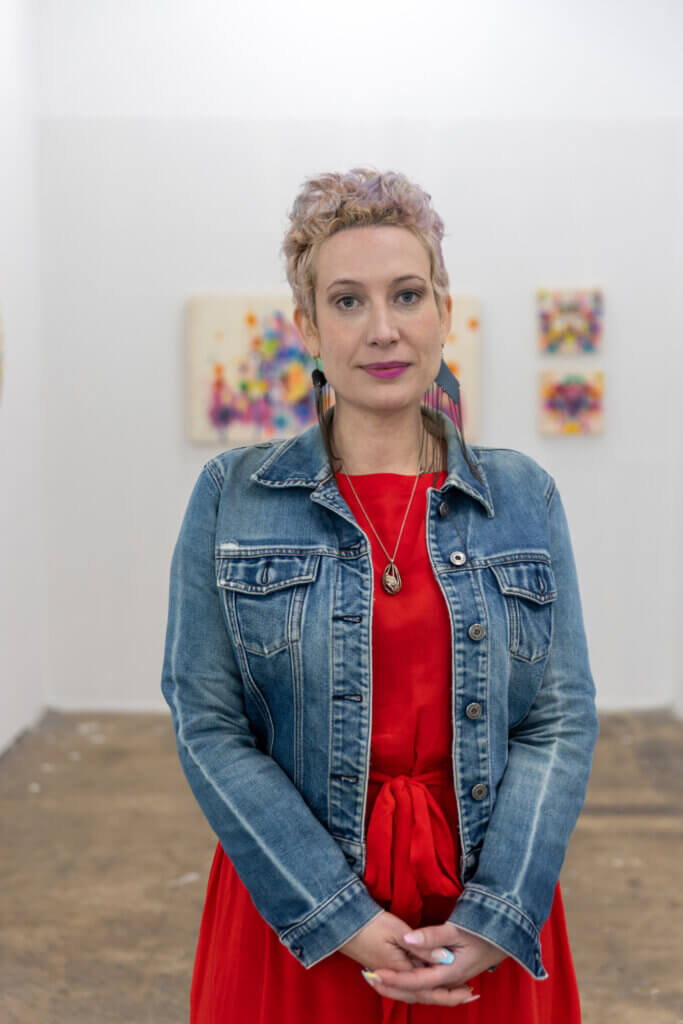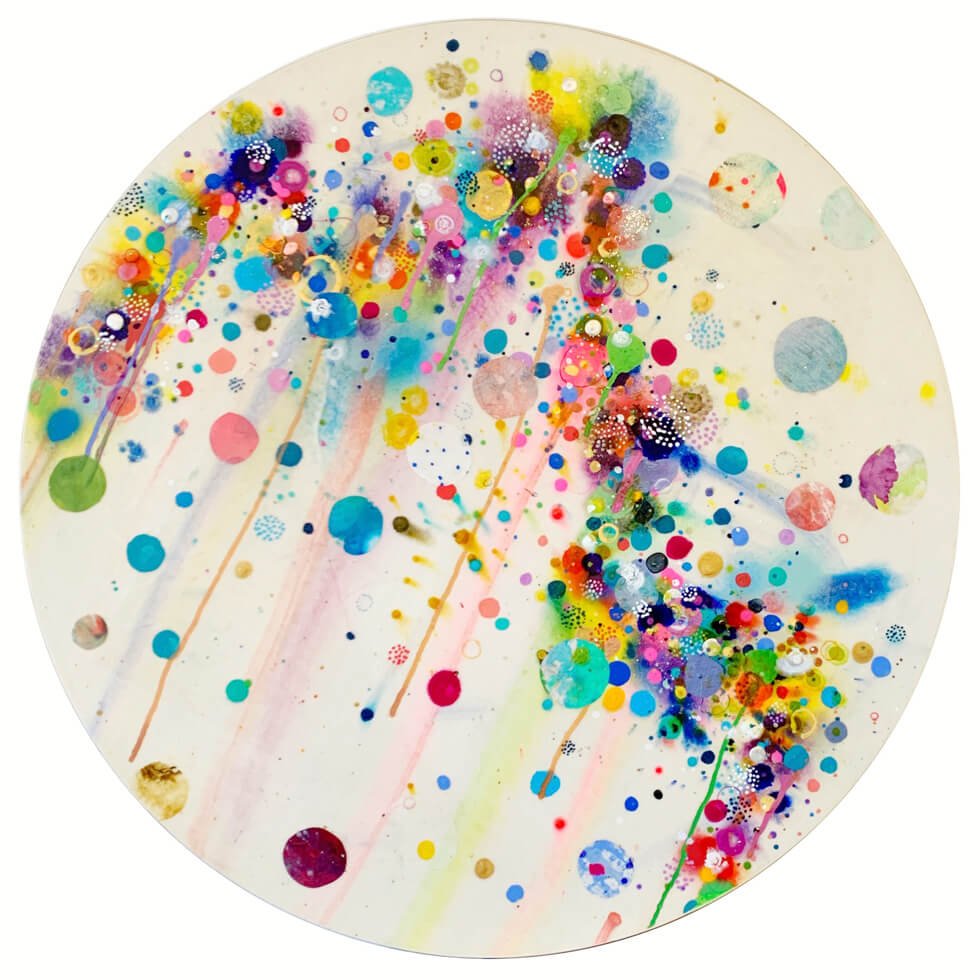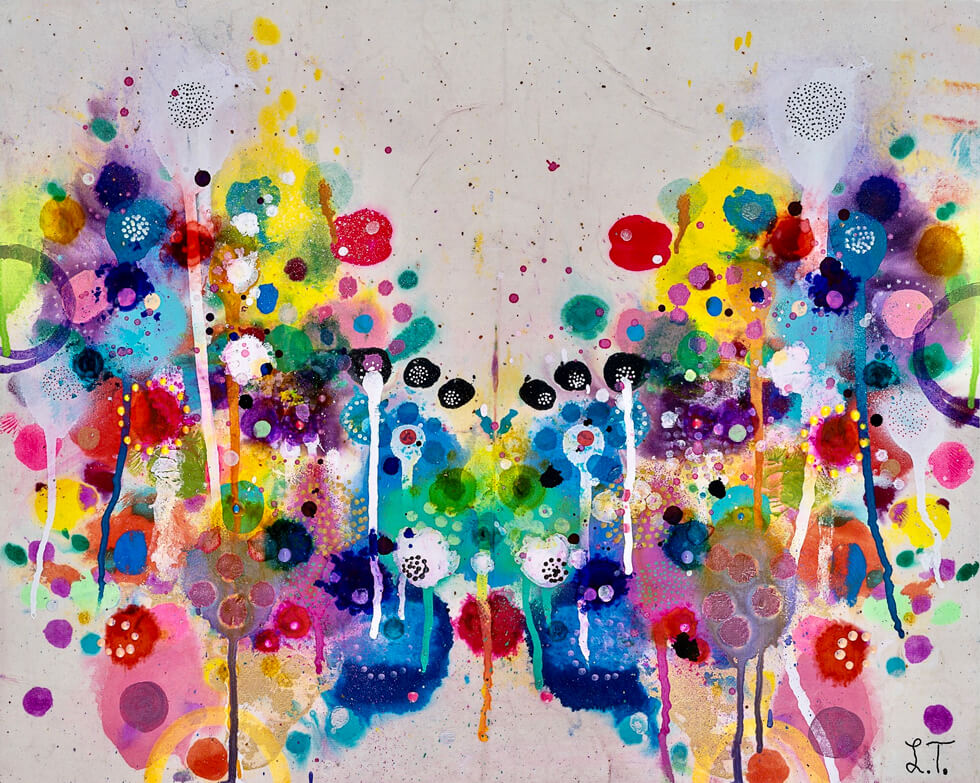Seattle-based artist Liz Tran’s practice is an immersive exploration into the depths of the human psyche and imagination, making her work a feast for the eyes as much as it is for the soul. Tran’s adept use of colours, dots, circles, blots, and splashes is like looking into a kaleidoscope. You see something new, a provocative experience that challenges perspective every time you look.
I have a childhood memory of taking the Rorschach test and it made a lasting impression. The inkblots in the test are ambiguous and open to interpretation
Liz Tran
Her past exhibition, Matriarchs and Daughters Dream Oceans of Braille at Morton Fine Art in collaboration with Homme DC in December last year, was inspired by Tran’s memories of being administered Rorschach tests. A psychological evaluation of mental health and trauma through associative responses to inkblots. In this body of work, Tran transforms disparate monochromatic prints into a captivating narrative of technicolour panels, a testament to her artistic prowess. Tran’s work features in public collections that include the City of Seattle’s Portable Works Collection, Capital One, and Vulcan Inc.
In this interview, we learn more about the Seattle-based artist practice, creative process and more.
Q: Hi Liz, can you please introduce yourself? Can you share a little bit about your background and who you are as an artist?
Liz Tran: I emerged into the world on the hottest day of summer in Oregon’s Willamette Valley. I hold no memory of a time when creating was not a part of my
life—Play-Doh sculptures and sand castle landscapes later morphed into massive
paintings and installations.
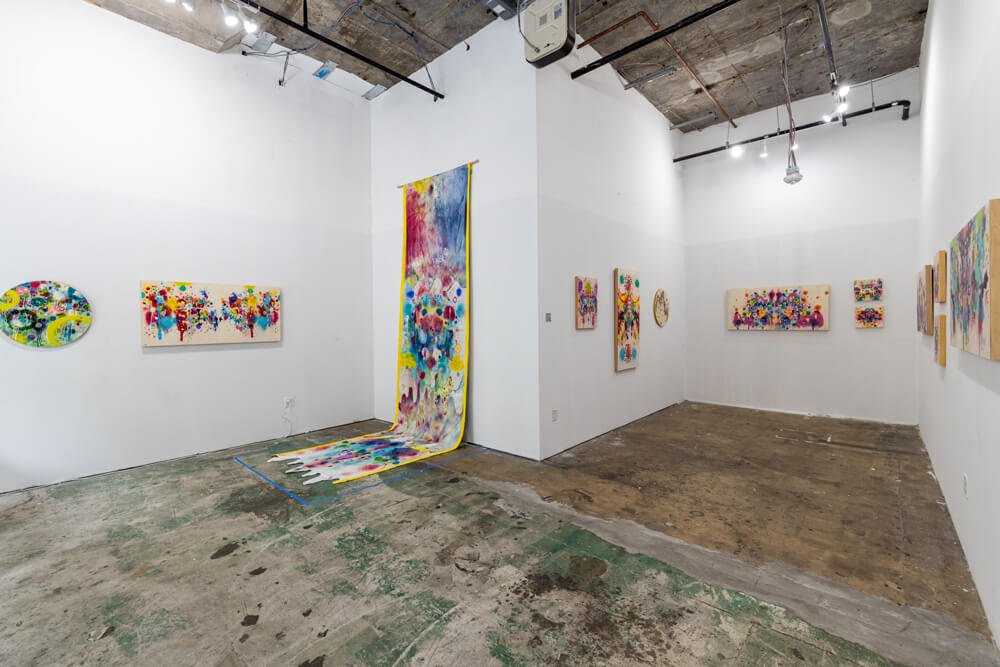
Courtesy Morton Fine Art. Photo credit: Jarrett Hendrix
Q: In some ways your art functions as a sort of anti- Rorschach or positive- Rorschach test, stripped of the pathological assessment that defined the original test. Can you speak into your appropriation of the form, how you came to the Rorschach test? The work in this series seems to operate on a number of levels, from colorful and invigorating to slyly subversive.
Liz Tran: I have a childhood memory of taking the Rorschach test and it made a lasting impression. The inkblots in the test are ambiguous and open to interpretation, which encourages viewers to consider their own subjectivity and how it influences their understanding of the art.
The Rorschach test has a long history and has been the subject of much debate and discussion within the field of psychology. By appropriating the form of the test, I’m exploring these themes and inviting viewers to approach it with an open mind, minus the intention of diagnosis, which, historically speaking, was often incorrect.
Q: Your work places generous emphasis on the self: self-knowledge, self-reflection, arguably self-care. How do you encourage and deepen these gestures to the self in a body of work that originates from a rather impersonal, profoundly analytical test?
Liz Tran: It’s true that the Rorschach test is often associated with psychological analysis and assessment, and it is typically administered by a trained evaluator in a clinical setting. However, the use of the Rorschach test in art can be a way to invite
self-reflection and exploration of the self in a more personal and artistic context.
Q: How do you view art? Buried in these works is the idea that there is no “correct way”to understand and engage with art. I’m interested in how you engage.
Liz Tran: I primarily engage with art and art making from the place of intuition and
feeling, later taking into consideration the context of the artist’s intentions and the cultural and historical context in which it was created. Keeping in mind that there are many different ways to engage with art, it’s important to remember that there is no “right” or “wrong” way to do so.
Q: What are your thoughts about abstraction? Obviously, you work in this mode, but your art nevertheless seems to be critically alert to how we talk about and look at abstraction (art)?
Liz Tran: Abstraction can be a very effective way for artists to explore and express complex ideas and emotions, allowing for a wide range of interpretations by the viewer. It can also be a way for artists to challenge traditional notions of representation and encourage viewers to consider the art in a more open-ended and subjective way.

Courtesy Morton Fine Art and the artist
Q: Heirloom has a delightful origin. Can you tell us the inspiration behind this piece, how long it took to complete, and its meaning? What was it like working with your mother on the piece?
Liz Tran: I have memories of sitting in church and staring at the oversized, colorful
wall hangings in the otherwise monochromatic space. This imagery definitely played a part in creating my own, non-denominational textile.
Heirloom is a large wall hanging composed of various bodies of work and pieces of installations completed over the past decade. The binding is my matriarchal grandmother’s tablecloth, cut up and dyed with turmeric and the entire piece is sewn together by my mother. Heirloom serves as a marker of my career as an artist, while simultaneously serving as a tribute to the women who came before me.
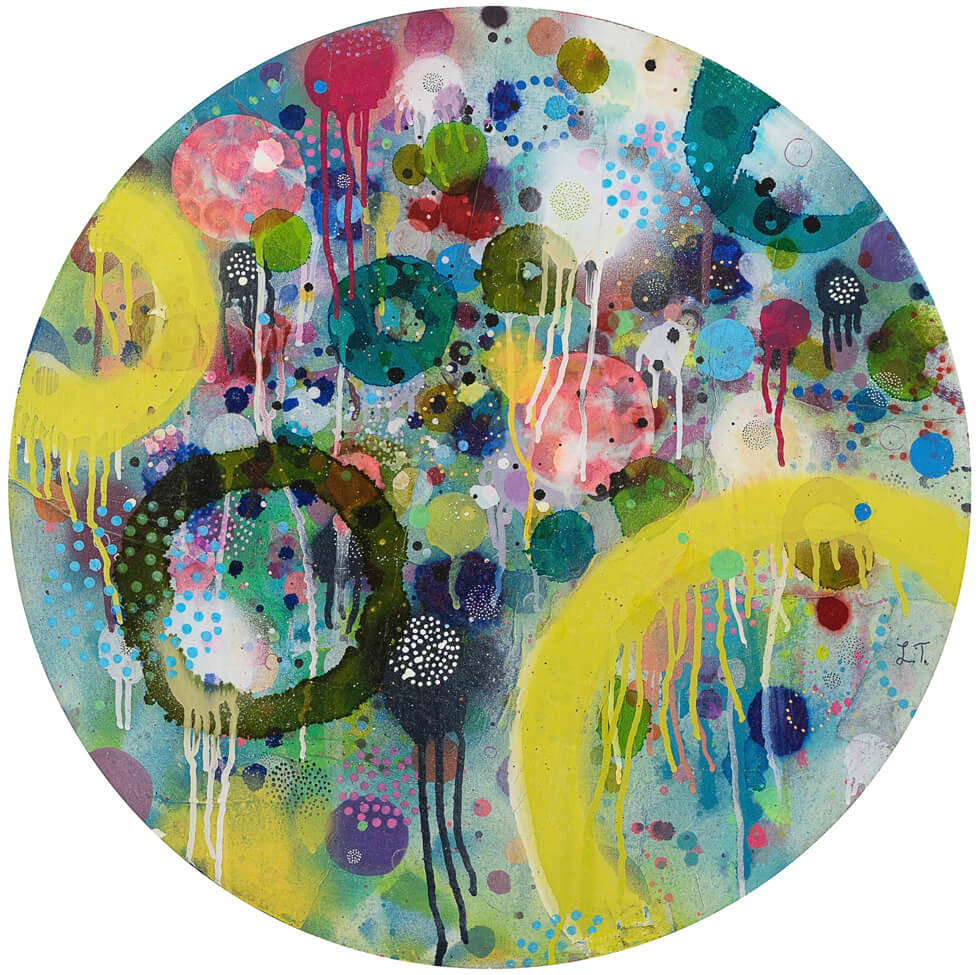
Cosmic Circle 1, 2020 24 x 24
in.Mixed media on panel
Courtesy Morton Fine Art and the artist
Q: What’s next for you as an artist?
Liz Tran: I’ll continue to follow my curiosity to worlds beyond explanation.
©2023 Liz Tran, Morton Fine Art



